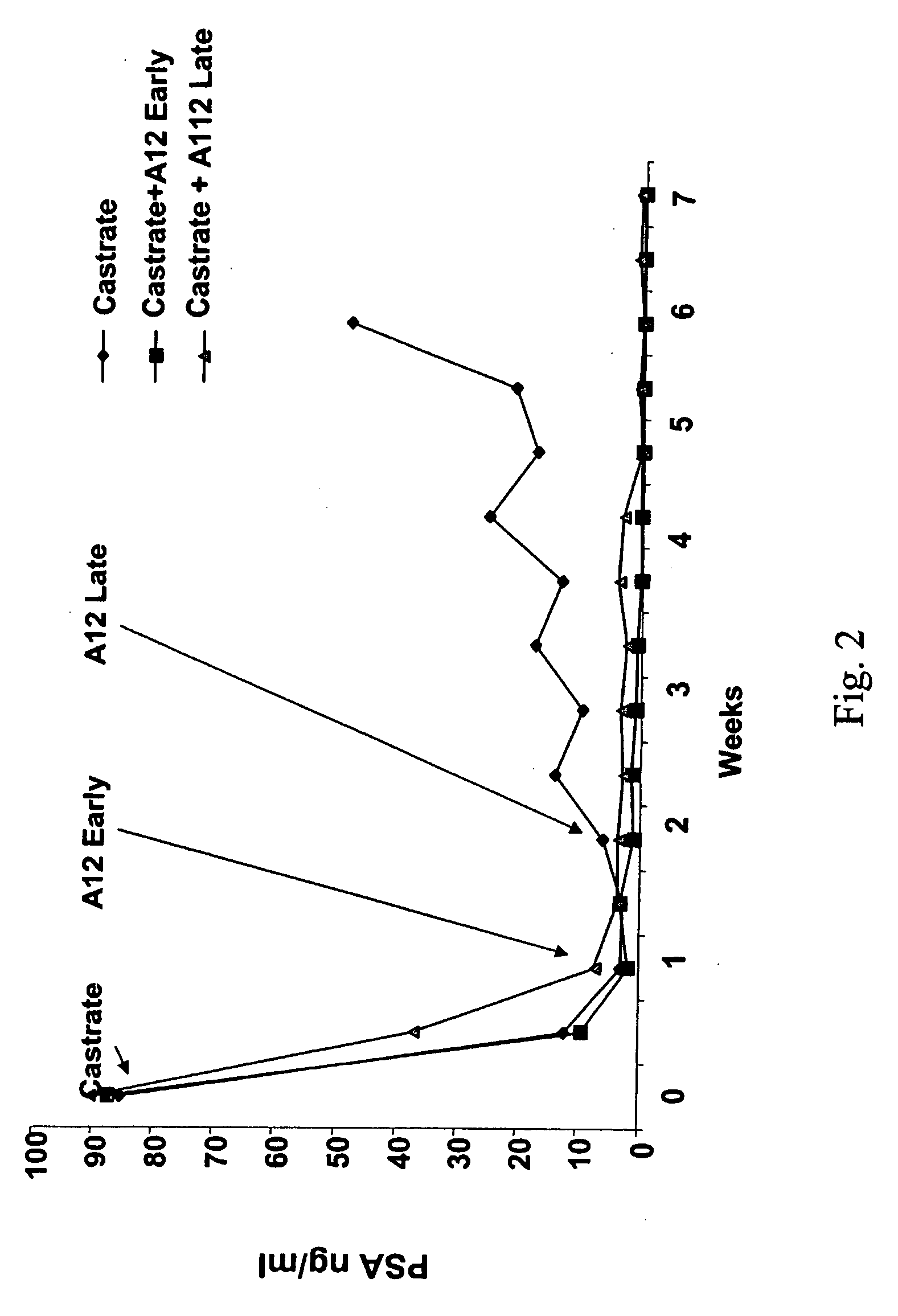IGF-IR antagonists as adjuvants for treatment of prostate cancer
a prostate cancer and igf-ir technology, applied in the field of prostate cancer treatment, can solve the problems of not explaining the rapidity and frequency of development, and the most cases of hormone-refractory disease cannot explain the most cases, and achieve the effect of inhibiting or preventing the transition of ad tumors
- Summary
- Abstract
- Description
- Claims
- Application Information
AI Technical Summary
Benefits of technology
Problems solved by technology
Method used
Image
Examples
examples
Antagonism of IGF-IR Inhibits Tumor Regrowth Following ADT
[0093]A preclinical model was developed to test the efficacy of inhibition of IGF-IR signaling using a human monoclonal IGF-IR antibody (IMC-A12) with castration on recurrence of prostate cancer following castration. For the study, a xenograft of LuCaP 35, an androgen responsive human prostate cancer cell line, was implanted subcutaneously into the flank of male SCID mice. LuCaP 35 can transition to an androgen-independent state and can be used to evaluate molecular changes associated with this process. At first, PSA levels drop and tumor volume decreases, but after a period of 60-120 days, regrowth of tumors is observed. LuCaP 35 has metastatic potential and results in mixed bone lesions. LuCaP 35 grown in intact male mice is androgen sensitive and responds to androgen withdrawal in the manner that is usually seen in patients.
[0094]LuCaP 35 cells were implanted subcutaneously into the flank of male SCID mice. When the tumors...
PUM
| Property | Measurement | Unit |
|---|---|---|
| Time | aaaaa | aaaaa |
Abstract
Description
Claims
Application Information
 Login to View More
Login to View More - R&D
- Intellectual Property
- Life Sciences
- Materials
- Tech Scout
- Unparalleled Data Quality
- Higher Quality Content
- 60% Fewer Hallucinations
Browse by: Latest US Patents, China's latest patents, Technical Efficacy Thesaurus, Application Domain, Technology Topic, Popular Technical Reports.
© 2025 PatSnap. All rights reserved.Legal|Privacy policy|Modern Slavery Act Transparency Statement|Sitemap|About US| Contact US: help@patsnap.com



